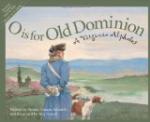The road ended in front of the house at Lower Weyanoke. The building is a large frame one and very old. It has had its full share of distinction, being for so many generations the home of the colonial family of Harwoods and of their descendants, the Lewises and the Douthats. Some years ago the plantation passed to strangers. From the riverward portico, we saw traces of an old garden whose memory is kept green by the straggling box that long ago bordered the fragrant flower-beds. On beyond was a glint of the sun-lit river. A group of towering cottonwood trees, standing in the dooryard, is so conspicuous a feature of the landscape that it serves as a guide for the pilots on the river boats.
Leaving the sailor here to do some foraging in the neighbourhood, we went on to Upper Weyanoke. We followed a road that skirted corn fields and pasture lands, busy plantation life on every hand. One could but think of the very different scene that was here in the days of the Civil War. Few places suffered at that time more than did Weyanoke. Here, part of Grant’s army crossed the James in the march upon Petersburg. While bridges were building, the Federal forces were scattered over the plantation; and when at last they crossed the river, they left devastation behind.
As we came upon the outbuildings of the upper plantation, we heard singing and laughter. Corn-husking was going on in the big barn. The doors were open, and from the distant roadway we could see the negroes at work, bits of their parti-coloured garb showing bright against the dark interior.
And at last, truly enough, our pathway led among the chickens and the geese. Indeed, one blustering gander “quite thought to bar our way.” But, taking courage from the stirring old couplet,
“We routed him:
we scouted him,
Nor lost a single man.”
There were other fowl in sight too; fowl that had a special significance just then. For, despite the bright, warm days, the last Thursday in November was near at hand; and we wondered whether our Thanksgiving dinner could be found in this flock of plump, bronze birds.
The early plantation house at Upper Wey-anoke was long ago destroyed by fire, and a modern house of brick now stands upon the old site. A broad, shaded lawn slopes to the river. Here one gets an impressive view of the James as it broadens into a curving bay below Windmill Point.
When we entered the home, our interest centred in its mistress, the little lady of old-time grace and courtesy sitting by the open fire. It was later that we noticed the two portraits hanging near her—one of Chief-Justice Marshall and one of a beautiful dark-eyed young woman.
The relationship of these three—Mrs. Douthat, the Chief-Justice, and the beautiful young woman—added to the charm of our talk. For the great John Marshall had a son John who married Elizabeth Alexander, a descendant of the colonial house of Thomas; and that Elizabeth Alexander was the girl in the picture. John and Elizabeth had a daughter, and that daughter was the sweet little lady sitting there beneath the portraits. Her grandfather, the Chief-Justice, named her Mary Willis in memory of his cherished, invalid wife.




